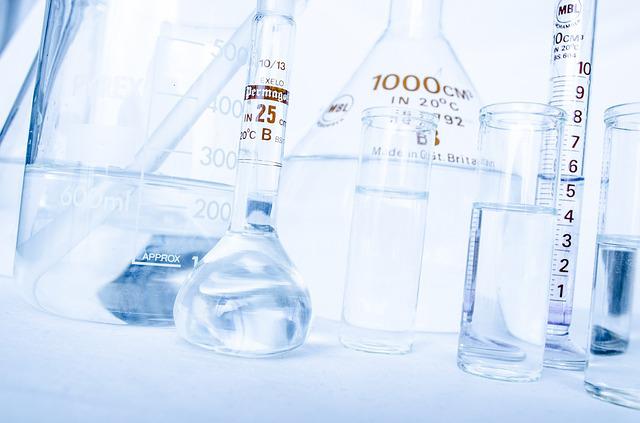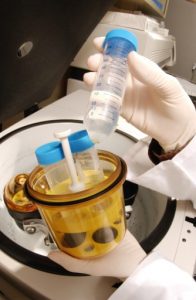 Between the price gouging and scandalous profit margins, Big Pharma has become the most loathed industry in America. Their sins have not only driven millions into the alternative market where consumers are being exposed to a whole new slate of misdeeds, but they have also spawned a phenomenon known as the Big Pharma Conspiracy Theory. Just how much of this theory is fact, how much is fiction, and how should Catholics regard it?
Between the price gouging and scandalous profit margins, Big Pharma has become the most loathed industry in America. Their sins have not only driven millions into the alternative market where consumers are being exposed to a whole new slate of misdeeds, but they have also spawned a phenomenon known as the Big Pharma Conspiracy Theory. Just how much of this theory is fact, how much is fiction, and how should Catholics regard it?I became interested in investigating this subject after watching the 2020 film, Plandemic, in which a research scientist named Judy Mikovitz alleged, among other things, that the pharmaceutical industry was suppressing a 100-year-old drug known as Suramin. Created to combat African sleeping sickness and river blindness, Mikovitz claimed that this drug can treat autism and “give children back their voice” but because it’s so cheap and the pharmaceutical industry can’t obtain a patent for it, the drug is being suppressed.
I was horrified by this (and a lot of the other things she said in this film) and decided to do some research. This led to discovering that almost everything she said in the film was untrue, including her claim that Suramin can treat autism. For example, this drug is not being suppressed, is well-known in autism research circles, and has proven to produce only “transient” improvement of core symptoms of autism. According to the University of California San Diego School of Medicine, a Phase II clinical trial assessing Suramin as a treatment for autism began in the spring of 2021. These trials are necessary because Suramin is an intravenous drug that has been known to cause harm when administered improperly.
As I watched claim after claim from the Plandemic movie disintegrate, it made me wonder about the Big Pharma Conspiracy theory in general. How much of this theory is based on fact, and how much is founded upon misinformation and misconceptions about the pharmaceutical industry?
In an article appearing in the journal, Medical Writing, Robert Blaskiewicz of the University of Wisconsin-Eau Claire had the same idea and took a look at the Big Pharma Conspiracy Theory with a critical eye. He found that this theory has something fundamental in common with similar conspiracy theories in that the main “plot” involves a small number of people working in secret against the public good and a small number of people who know about it.
 “In this case, the villain is the Pharmaceutical Industry. It’s not the actual pharmaceutical industry; rather it is the pharmaceutical industry as they imagine it. In these stories, ‘Big Pharma’ is shorthand for an abstract entity comprised of corporations, regulators, NGOs, politicians, and often physicians, all with a finger in the trillion-dollar prescription pharmaceutical pie,” Blaskiewicz writes.
“In this case, the villain is the Pharmaceutical Industry. It’s not the actual pharmaceutical industry; rather it is the pharmaceutical industry as they imagine it. In these stories, ‘Big Pharma’ is shorthand for an abstract entity comprised of corporations, regulators, NGOs, politicians, and often physicians, all with a finger in the trillion-dollar prescription pharmaceutical pie,” Blaskiewicz writes.
Like other conspiracy theories, the Big Pharma Conspiracy Theory contains real facts such as the harmful side effects of pharmaceuticals, the outrageous price gouging such as the EpiPen and Daraprim scandals, the corrupt regulatory officials, etc. However, conspiracy theorists extrapolate these facts beyond reasonable limits to make the pharmaceutical industry into a kind of vast evil empire that no longer bears any resemblance to the real industry.
For example, consider the oft repeated claim that the pharmaceutical industry already has a cure for cancer but is suppressing it because they can make more money by treating the symptoms than by curing it.
This claim doesn’t make sense in the real world because the pharmaceutical industry is profit driven. Why would they suppress a cure that could make them a fortune? As Drew Smith, formerly of NeXstar Pharma, SomaLogic and MicroPhage explains, there is real competition in the pharma industry and any drug that can cure a disease will make a manufacturer a boatload of money.
“We’ve seen this competition play out just recently with Sovaldi, which cures Hepatitis C infections, rather than just suppress them as ribavirin/interferon therapy (usually) did. Sovaldi had the most profitable launch of any drug in history. No drug company exec is going to pass on that type of opportunity,” Smith writes.
Another claim is similar to the one made by Mikovitz about Sumarin – that Big Pharma does not want to waste their money developing cheap and unprofitable drugs.
This is actually true, Smith writes, which is why the U.S. government passed The Orphan Drug Act of 1983 which incentivizes production of drugs defined as those that target treatment of diseases affecting less than 200,000 people in the U.S. or for which there is “no reasonable expectation” of profitability. Pharmaceutical companies are definitely jumping on this bandwagon.
“By one accounting, the number of orphan drugs approved jumped from 34 in 1967-1983, to 347 from 1984-2009,” Smith reports.
Another claim is that the medical establishment suppresses the use of alternatives and prevents people from benefiting from them.
Once again, I found an abundance of evidence to the contrary. As Dr. Edzard Ernst documents in his book, SCAM: So Called Alternative Medicine, in his many years researching this area from both inside and outside of the alternative market, he has never come across any evidence of this.
“On the contrary, the pharmaceutical industry…seems all too keen to jump on to the alternative bandwagon and maximize their profit by selling SCAM products,” he writes.
They do this not because SCAM products are proven to work but because this is what customers want so they provide it in order to make money.
“Similarly, Universities, hospitals, charities and other organizations in health care are currently bending over backward to accommodate as much SCAM as they possible can get away with. And they do this despite an embarrassing lack of convincing evidence supporting the treatments in question,” he adds.
Hospitals offering alternatives include some of the most prestigious medical institutions in the United States such as Johns Hopkins University Hospital, Yale, MD Anderson Cancer Center, Duke University, and the Cleveland Clinic.
This makes sense because the alternative market is a $37 billion-a-year business.
 “The people running the hospitals are doctors, but they also have MBAs. They talk of patients as customers. Customers have demands. Your job is to sell them what they want,” said Arthur Caplan, a bioethicist at New York University’s medical school. Too often, he said, the attitude is, “We’re damn well going to do it if the guys down the street are doing it.”
“The people running the hospitals are doctors, but they also have MBAs. They talk of patients as customers. Customers have demands. Your job is to sell them what they want,” said Arthur Caplan, a bioethicist at New York University’s medical school. Too often, he said, the attitude is, “We’re damn well going to do it if the guys down the street are doing it.”
So, what can be done to combat the Big Pharma conspiracy theory?
“Sadly, the theory will always be around because peddlers of alternative medicine find Big Pharma to be a useful adversary in their quest to sell their questionable remedies and because of the role that belief plays in people’s lives,” Blaskewitz writes. “Furthermore, once the theory has taken root in someone’s mind, it’s often impossible to dislodge it, as the conspiracy theory turns those who argue against it into ‘paid shills’ or ‘sheeple’. It is best to catch people before they fall into conspiratorial beliefs. Secrecy and ignorance beget conspiracy theories; they are best combated by education and transparency.”
For a Catholic, however, adopting theories such as the Big Pharma conspiracy theory that can tempt a person to shun all medicine is a much more serious matter.
According to the Ethical and Religious Directives for Catholic Health Care Services, Catholics are required to use ordinary means (scientifically proven) to treat anything contagious or life-threatening. The only exceptions to this rule would be if proven medical help has been exhausted. Otherwise, we are morally obligated to use ordinary means for conditions such as the flu, COVID-19, cancer, heart disease, etc. not because the Church is aligned with “Big Pharma” but because her teaching is based on the virtues of justice and charity. We have a duty to properly care for our bodies, the bodies of our loved ones, and those of our community – and this duty is considered to be an act of love. While we can use alternatives in conjunction with proven means, we cannot use an alternative in place of a proven means to treat anything contagious or life threatening.
“Condemnation of medical science, as a whole, would imply a condemnation of the Catholic Church, which not only runs hospitals but also requires its members to use ordinary medical means to treat serous medical conditions,” writes Dr. Kevin Rickert in his article, “Superstition and Unscientific Medicine: A Thomistic Analysis.”
Even though many Catholics turn to alternatives as reaction to poor treatment by an incompetent physician, this says nothing about medical science itself, he says. “They give reasons to choose a doctor carefully, but they do not give reasons to abandon the proven techniques of scientific medicine.”
Catholics need to be careful not to fall into the temptation of viewing Church teaching on the use of alternatives through the lens of the Big Pharma Conspiracy Theory which leads many to believe that by avoiding modern medicine they are avoiding evil and that “natural means” are more Godly and holy.
The only Godly and holy way for a Catholic to view the use of alternatives is through the lens of Church teaching.
© All Rights Reserved, Living His Life Abundantly®/Women of Grace® http://www.womenofgrace.com
